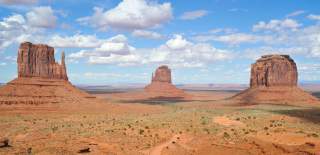The sun is out, the days are longer – and, after a long dark winter, the magical New Forest is bursting with new life!
From magnificent, heavy-antlered Red Deer, to the tiny sand lizard, you’ll find a feast of amazing creatures to marvel over and photograph in the next few months.
So, why not plan your own, David Attenborough-style safari into our woods or the open spaces of our unique heathland – we’re one of the UK’s largest Sites of Special Scientific Interest and festooned with fascinating flora and fauna.
.gif)
-2.gif)
Of course, the adorable newborn foals are the stars of the show in the New Forest throughout spring. You may even be lucky enough to see the magic of the foals taking their first steps across forest floors or catch them frolicking in joy as they get more steady on their feet!
As well as foals, you’ll see cute calves, baby donkeys and fawns too!
.gif)
-2.gif)
Speaking of fawns, did you know there are five species of deer in the UK and you can find all of them in the New Forest? Red Deer are the UK’s largest wild land mammal and we have around 100 of them. According to the New Forest National Park Authority, Ober Heath near Brockenhurst and the area around Burley are good places to see them. You’ll know them by their reddish coats and giant antlers.
Roe Deer are far smaller and easier to find and have smaller, spiraled horns. Fallow Deer sport ‘Bambi’ style spots and the males have wide-set horns with a webbed appearance. Much harder to spot are the Sika and Muntjac deer, because both species are small and elusive.
All of our forest creatures are VERY protective of their young – do not approach, startle or feed any free roaming animals. Always follow the New Forest Code.
.gif)
-2.gif)
Over the next few weeks, vixens will be bringing out their fox cubs to play, and badgers will be foraging with their young.
Like the deer, you’re most likely to catch these beautiful animals is always just after dawn or at dusk.
If you are an early riser, try and get here for the dawn chorus, when you’ll be treated to the wonderful noise of thousands of birds singing at the start of each day. Or wait until after dusk and try and catch the hooting of the owls in the Ancient Woodland.
.gif)
-2.gif)
Other birds to look out for are Buzzards, Goshawks, and the fabulous White-Tailed Eagles that occasionally visit from their home on the Isle of Wight. They are our largest bird of prey and you’ll know them by their wingspan, which is longer than a front door!
If you do discover a bird’s nest, don’t disturb or attempt to touch it but watch carefully from a little distance away and you’ll eventually be rewarded by the sight of the mother feeding her young.
Baby bunnies and the odd leverett – young hare - can also be seen in the later spring, especially on the grassier areas of our heathland and these are also the best spots to seek out some of our most amazing treasures – lizards and snakes.
.gif)
-2.gif)
The New Forest is also home to all five of Britain’s native reptile species, including the rare sand lizard. They are a beautiful golden green, with jewel-coloured spots and very hard to find but unlike our other animals, are best found on warm, sunny days, when they like to bask in the heat.
On days like these you may also spot our three snake species; adders, grass-snakes or the much harder-to-find smooth snakes. How to tell the difference? Adders are a greyish colour with a distinctive zig-zag down their backs and a reddish-coloured eye. Grass snakes are a green or green-ish brown and have random black markings. Their eyes are greenish, too.
If you spot a snake with grey or dark brown scales and a less distinctive pattern down its body, congratulate yourself, because it could be an incredibly rare smooth snake. And, if you spot a short, slim ‘snake’ around a foot long, you haven’t seen a snake at all – just a slow-worm, which is a type of legless lizard!
If you’re near water, keep an eye out for newts, shy, amphibious reptiles that look like little dragons. They live in ponds and can sometimes be seen swimming underwater. Ponds are a great place to spot frogs and toads, too.
Spring is also a fabulous time to look for butterflies and the best places for these are on our commons and heaths, which will be dotted with yellow gorse plants which smell like warm coconut.
.gif)
-2.gif)
And, talking of scents, make time to visit the bluebells. The New Forest is one of the world’s top spots to experience this annual feast for the senses. Ultramarine blue on acid green, these delicate flowers pour their scent into the air from the forest’s floor. Spot them at Clayhill Heath near Lyndhurst, Broomy Inclosure near Exbury, Roydon Woods and Sandleheath near Fordingbridge, and Pondhead Inclosure near Lyndhurst.
There is so much stunning spring wildlife to enjoy in the New Forest!

